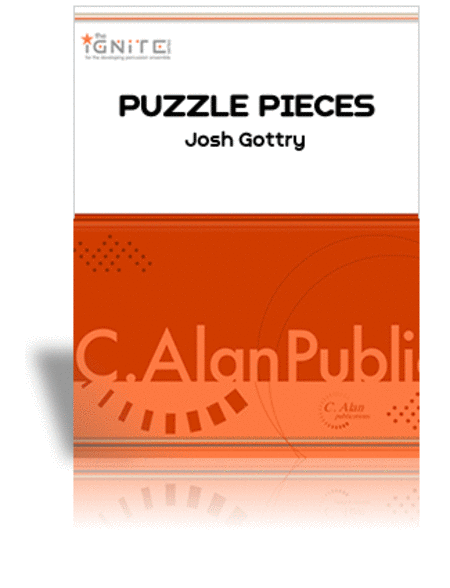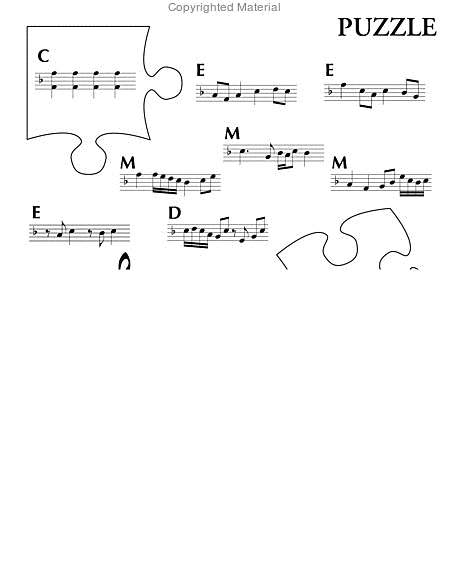Details
Description
SKU: CN.17610
Composed by Josh Gottry. Ignite Series. Score and parts. Duration 2:30+. Published by C. Alan Publications (CN.17610).Puzzle Pieces was written specifically for the C. Alan Publications Ignite Series which features entertaining yet flexible pieces for young percussion ensembles. It is a minimalistic work that allows the performers to be part of the composition process.
Puzzle Pieces was written specifically for the C. Alan Publications Ignite Series which features entertaining yet flexible pieces for young percussion ensembles. It is a minimalistic work that allows the performers to be part of the composition process. - Any number of pitched or non-pitched percussion instruments may be used by any number of players. - Performers playing pitched instruments read the left-facing page of the score. - Performers playing non-pitched instruments read the right-facing page of the score. - Pitched instrument parts may be played in any octave. On each page, there are five categories of measures: C - Corner Piece E - Edge Piece M - Middle Piece D - Detail Piece F - Final Piece Just as one might approach assembling a puzzle, this work progresses systematically from the corners to the final piece. Once tempo is established by the conductor or a selected performer, each member of the ensemble may begin playing the 'corner piece' of their choice. Players should enter on beat one of a measure but need not start at the same time. Each player should repeat that 'corner piece' as many or as few times as desired before moving to one or more of the 'edge pieces' and again repeat as desired. At any time during the piece, students may also rest or not play for one or more measures. This process continues as each player moves to the 'middle pieces' and 'detail pieces.' Once all performers have reached the 'detail pieces' and are repeating those measures, the conductor or selected performer should cue the ensemble to play the 'final piece' in unison to conclude the work, in effect 'completing the puzzle.-.


 Share
Share